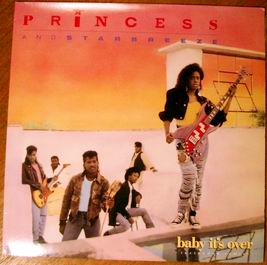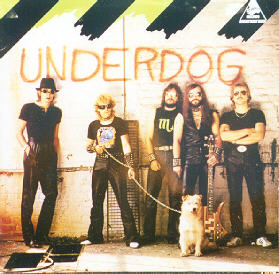'82 BC RICH MOCKINGBIRD,USA Hand Made,Natural WaveMaple Top, Original Case, EX+++
code BA670

This bass is one of the first original B.C. Rich USA Hand Made instruments. It is equipped with two Dimarzio P-Style pickups and a Badass bridge. Full active/passive electronics. Super flame maple on the body and neck front and rear, THE ROKING BASS
Negli anni '60 e '70,musicisti come Lou Reed,Elvis Presley,Eric Clapton,Jimy Hendrix,i Beach Boys,Robert Palmer ,Al Kooper,Neil Diamond,Megadeth ed altri incominciavano ad affidare a BERNIE RICO Senior la costruzione dei loro strumenti,spesso portandogli disegni originali e stravaganti. In seguito,altri chitarristi di Band famose scelsero il laboratorio californiano per commissionare gli strumenti delle loro "peformances" quali Aerosmith,Black Sabbath,Alice Cooper,Eagles,The King,Doobie Brothers,Wasp,Guns & Roses,Marylin Manson,C.C.Deville,David Bowie,Meatloaf,Guess Who,Prince,Kiss...
During the 70s and 80s, Bernie Rico was at the top of his game. Handcrafting some of the finest rock guitars of the era, these early BC Rich instruments are very popular among collectors. This Mockingbird bass is a great example of the breed. Made in the USA to the highest standards of quality.
In the late '70s as production grew, the serial numbers begin to get ahead of themselves since only 1000 numbers were available in a series. With production growing rapidly by 1980, the serial numbers had gotten about two to three years ahead. For example, a bass guitar that is documented to have been purchased (not necessarily made) in 1980, bore the serial number #82595. Although neck-through production never surpassed approximately 2200 guitars a year, as the '80s progressed, the serial numbers continued to get ahead of the actual year. By 1981 the numbers were about four years ahead. This gap remained fairly constant until Bernie Sr. turned the production over to Class Axe in 1989.
Negli anni '60 e '70,musicisti come Lou Reed,Elvis Presley,Eric Clapton,Jimy Hendrix,i Beach Boys,Robert Palmer ,Al Kooper,Neil Diamond,Megadeth ed altri incominciavano ad affidare a BERNIE RICO Senior la costruzione dei loro strumenti,spesso portandogli disegni originali e stravaganti. In seguito,altri chitarristi di Band famose scelsero il laboratorio californiano per commissionare gli strumenti delle loro "peformances" quali Aerosmith,Black Sabbath,Alice Cooper,Eagles,The King,Doobie Brothers,Wasp,Guns & Roses,Marylin Manson,C.C.Deville,David Bowie,Meatloaf,Guess Who,Prince,Kiss...
In the late '70s as production grew, the serial numbers begin to get ahead of themselves since only 1000 numbers were available in a series. With production growing rapidly by 1980, the serial numbers had gotten about two to three years ahead. For example, a bass guitar that is documented to have been purchased (not necessarily made) in 1980, bore the serial number #82595. Although neck-through production never surpassed approximately 2200 guitars a year, as the '80s progressed, the serial numbers continued to get ahead of the actual year. By 1981 the numbers were about four years ahead. This gap remained fairly constant until Bernie Sr. turned the production over to Class Axe in 1989.
In 1968, Bernie made his first electric solidbody using a Fender
neck. This led to his first attempts at guitar production in the form of about
ten Les Paul-shaped guitars and basses modeled after the Gibson EB-3. Around
1972, Bernie and an employee named Bob Hall started developing a model they
called the Seagull (which has no connection to the Godin Guitars acoustic brand).
It was the company’s first production electric guitar, and it came to market in
1974. Up to that time, the store’s phone greeting was “Bernardo’s Guitar Shop.”
One day, Stich answered the phone with, “B.C. Rich,” and some think that’s the
moment the company name changed and it became a full-fledged guitar manufacturer
with a mission. “B.C. Rich’s intention was to make a production-line custom
guitar with high quality and craftsmanship that was very expensive for the day,”
says Stich. “In 1977, they were $999 retail—and you were paying more than retail
if you could actually find one.”
Although, B.C. Rich was often referred to as a custom shop at the time, it wasn’t
custom in the conventional sense of the word. “The guitars were handcrafted, but
they were still production guitars. People might request special inlays or maybe
Bartolini Hi-A pickups instead of DiMarzios, but basically it was a
production-line guitar,” explains Stich. The company had facilities in both
California and Tijuana, Mexico. All the workers were from Mexico, and both shops
freely interchanged parts. For the electric guitars, Bernie would send wood,
fretboards, frets, inlays, glues, and other materials over to Mexico, and then
drive down once a month to pick up the assembled guitars, which were then
painted and finally assembled in L.A. The steel-string acoustics, however, were
made right there in L.A.
Handmade—All the Way Down to the Tools
When Stich says early B.C. Riches were handmade, he means it in the truest sense
of the phrase. He recalls that there were no machines in sight inside the shop—only
band saws, belt sanders, block planes, spoke shaves, files, and special guitar
knives that the luthiers made themselves out of highly carbonized metal. “The
guys would literally go out and buy a metal slab that was probably a quarter
inch thick, and they would cut it, shape it, sharpen it, and make a handle for
it—usually out of mahogany. People would walk in and go, ‘Where’s your machinery?’
and we’d go, ‘Sittin’ right there,’ and point at a knife. Then they’d go into
the paint shop and guys would be water-sanding, finishing coats, and buffing by
hand. When they cut the blanks, the sides would be glued on and wrapped with
cord like in the old days, when they made violins and wrapped them with cords in
France in the 1500s. They would tap shims between the cord and the wood to make
it as tight as possible for the glue joints, which were always superb. The
guitars would go through a process of being marked out with a pencil and a
template of the shape of the guitar—we had aluminum templates and later
plastic—and then they would do a cutout on a band saw. From there, the necks
would be handcarved using what I call a ‘Mexican guitar maker’s knife,’ and they
just hacked the [expletive] out of it. It would start out with a hammer and a
chisel—bam, bam, bam—making the neck. Then they would go to the knife, and
finally to a spoke shave. These guys could knock out a neck in about 20 minutes.”
Because necks were handcarved back then, B.C. Rich could offer personalized
profiles. It was common to see big-name rock stars sitting with the late master
luthier Juan Hernandez while he hacked away at a neck blank with a knife and
spoke shave. Stich recalls that the guitar would go back and forth between
Hernandez and the client, who would feel it and maybe say, “Take off a little
more right here, a little more there,” until they got it right. After the body
and neck were completed, the last stop was the assembly shop—where everything
was hardwired. “The parts—the Varitone, the preamp circuitry, etc.—were made by
hand,” says Stich. “We would go to the electronics store and buy all the parts
we needed, and they would cut up the PCB boards. It was really labor intensive.”
Intricate Circuitry
Noted luthier Neal Moser, who had developed a reputation as the go-to guy for
hot-rodding guitar electronics, joined the company in 1974. Over the initial
dinner meeting at Bernie’s house, Moser sketched out the circuitry and layout
for a new design on a piece of cardboard. He soon went to work for B.C. Rich as
an independent contractor. His dinner-table design—which consisted of master
volume and tone controls, a built-in preamp, a 6-position Varitone, and coil
taps—was implemented on the production Seagull guitar. B.C. Rich’s electric
offerings were originally equipped with Guild pickups, but the company later
switched to DiMarzios, which Stich says, “added a whole different reality to the
guitars. The Guilds had this ’50s or ’60s sound, whereas the DiMarzios had a new
sound to them. They also worked better with Moser’s circuitry.”
Rod Stewart from a Madison Square Garden
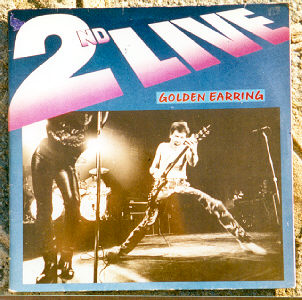
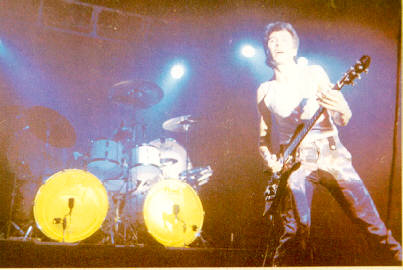
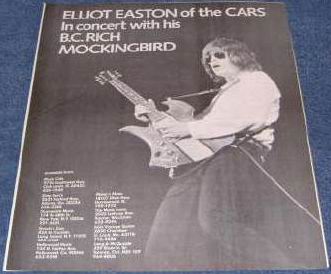
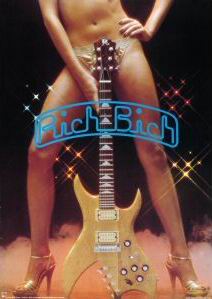
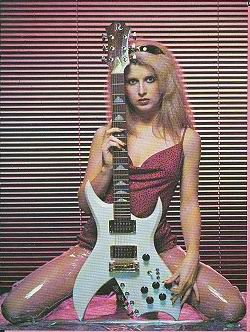
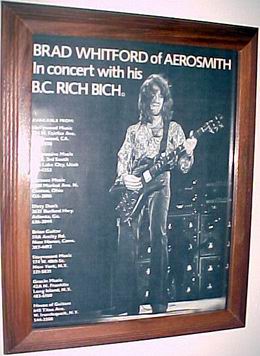
1978 BCRich and Whitford
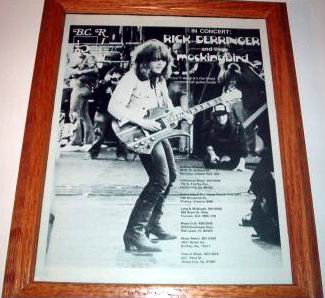
Rick Derringer
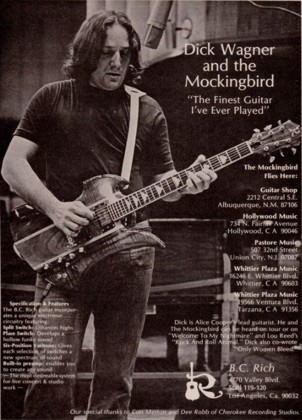
Dick Wagner
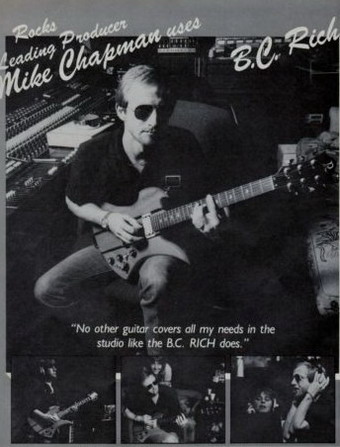
The Holmes Brothers
